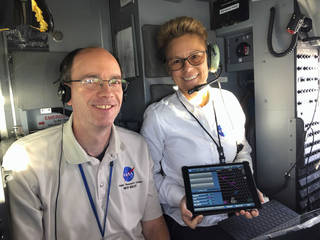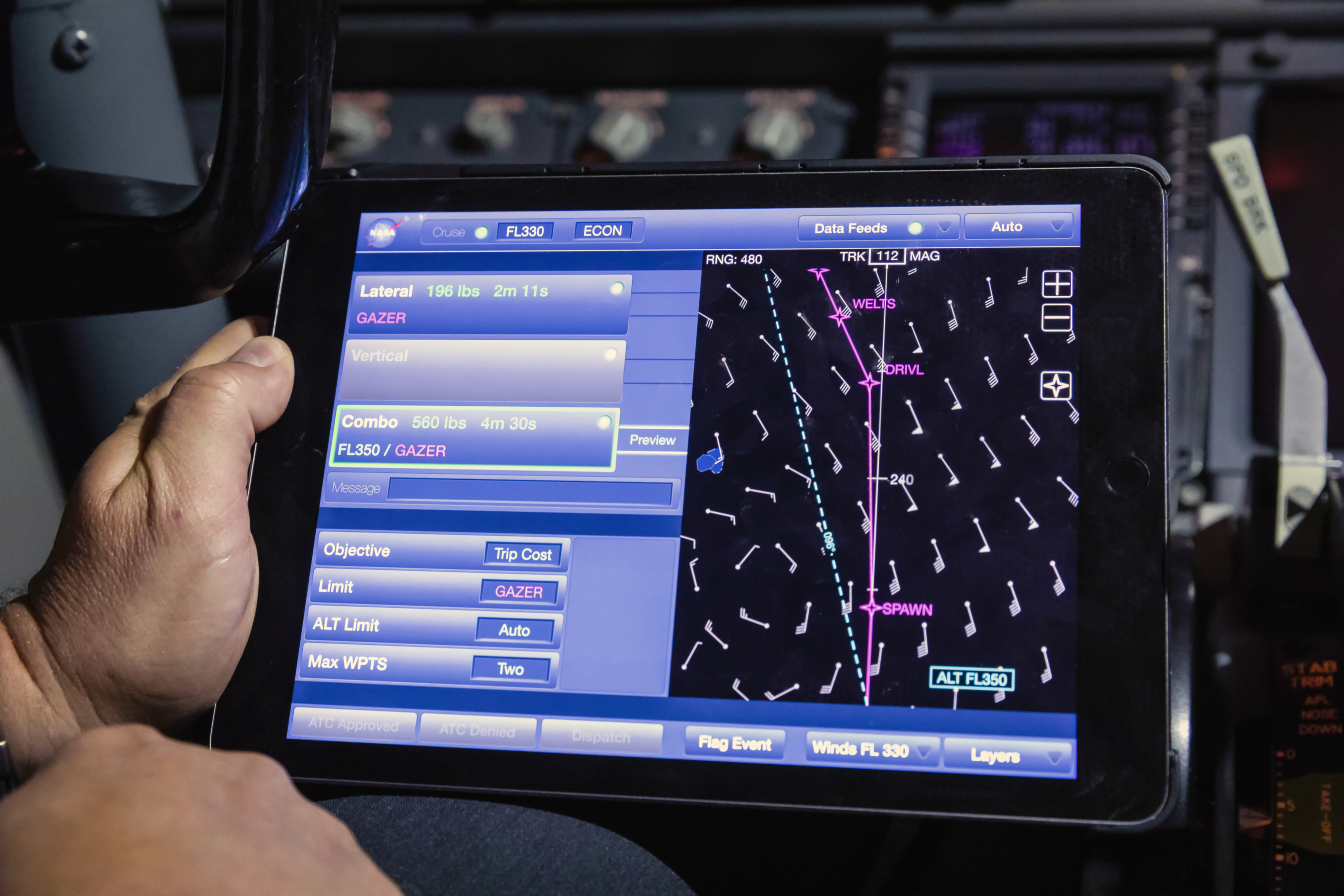


The 100 winners of the award were announced by R&D World Magazine. Paul J. Heney, vice president and editorial director for R&D World said in a press release that ‘these 100 winning products and technologies are the disruptors that will change industries and make the world a better place in the coming years.’
In this innovator spotlight, David Wing, Traffic Aware Strategic Aircrew Requests (TASAR) research lead, tells us about this revolutionary technology.
Please tell us about yourself
I work in crew systems and aviation operations. That is the part of NASA Aeronautics where we are developing and studying concepts and technologies that help pilots and aircraft manage their flight better and more safely. We also look at how aircraft would interact in the in the aviation system to learn how you can get the most airplanes through the airspace and to an airport as fast as possible considering all the challenges.
What does this invention do?
TASAR stands for Traffic Aware Strategic Aircrew Requests and TASAR is the concept of a pilot using software technology in the cockpit to optimize their trajectory of the airplane in real time. This technology uses a route optimizing software tool named the Traffic Aware Planner, or TAP, and it is connected to all sorts of information which provides the opportunity for this tool to really know where the airplane is, where it's going, and a lot about the environment that it's flying in. So, the weather in the airspace, the wind field, and even the traffic of the other aircraft that are nearby.
What problem does this technology solve?
Today, when a flight is planned, the route of flight is determined ahead of time before the flight takes off, using information that's available at that time about what the airspace is going to be like. By the time the airplane gets into the air it's typically been many hours since that flight plan was generated and there's often opportunities to improve the flight at that time when you're in the air. What we're doing with TASAR is we're giving them software tools and have access to a vast amount of information and the ability to scan hundreds of different possible route changes and find the most efficient one, and make that recommendation to the flight crew.
TASAR
Who else might benefit from this technology?
This technology can benefit anyone who operates an airplane. So that includes the airlines, it also includes corporate aviation, it can include general aviation, it could include the military. Anyone who operates an aircraft and needs to, or would like to, re-optimize that flight in real time from the cockpit.
Do you have any future plans to continue development of this technology?
Yes, we're doing some very exciting work. We have an airline partner that’s working with NASA. They have requested and agreed to put the TAP software into several of their airplanes and to test it out during their regular commercial revenue flights. Right now, we are getting that software installed and tested and preparing the airline pilots to start using the software very soon.
Is there anything else you want us to know about your innovation?
One of the neat things about TASAR is that it is leveraging a revolution in the industry that everybody recognizes, which is the idea of the connected aircraft. The connected aircraft is an airplane that is sharing data between systems and between air and ground, accessing data from the airplane and from all kinds of different sources, and what this software does is it puts that information flow to practical use and turns it into a direct benefit for the end-user. Our customers are investing in connectivity, they're investing in hardware platforms, computing platforms that can run applications. This is basically your killer app. This is the application that can turn all that information flow into something practical and tangible for the operator of that aircraft to gain immediate benefit, even on the first flight. They’ll be able to see very quickly the value of this investment.
Whom should I contact if I want to know more about this technology?
For more information on TASAR and TAP, please email NASA Langley's Technology Transfer Office at LARC-DL-TechnologyGateway@mail.nasa.gov
You can also read more about the technology here.



